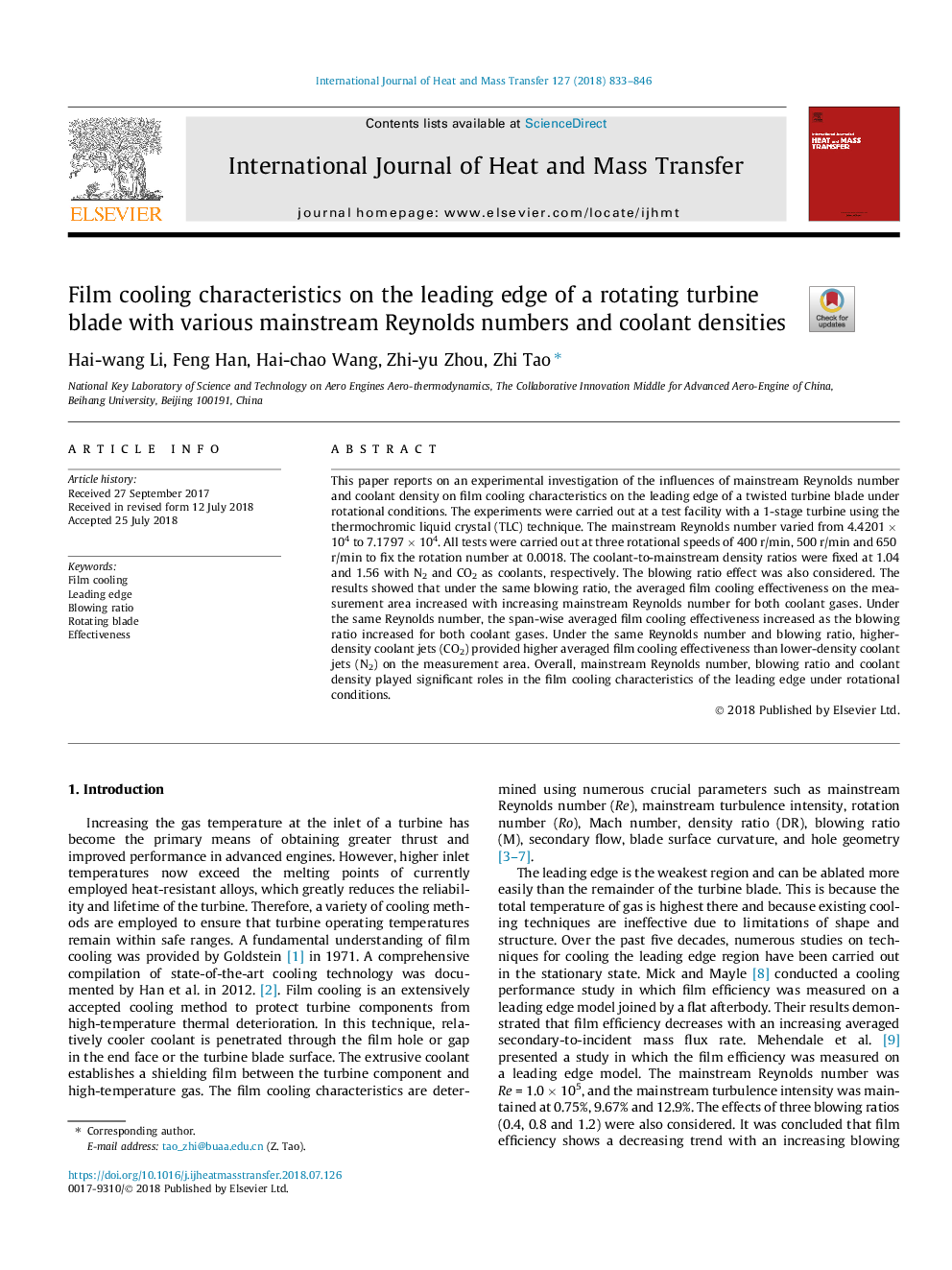| Article ID | Journal | Published Year | Pages | File Type |
|---|---|---|---|---|
| 7053714 | International Journal of Heat and Mass Transfer | 2018 | 14 Pages |
Abstract
This paper reports on an experimental investigation of the influences of mainstream Reynolds number and coolant density on film cooling characteristics on the leading edge of a twisted turbine blade under rotational conditions. The experiments were carried out at a test facility with a 1-stage turbine using the thermochromic liquid crystal (TLC) technique. The mainstream Reynolds number varied from 4.4201â¯Ãâ¯104 to 7.1797â¯Ãâ¯104. All tests were carried out at three rotational speeds of 400â¯r/min, 500â¯r/min and 650â¯r/min to fix the rotation number at 0.0018. The coolant-to-mainstream density ratios were fixed at 1.04 and 1.56 with N2 and CO2 as coolants, respectively. The blowing ratio effect was also considered. The results showed that under the same blowing ratio, the averaged film cooling effectiveness on the measurement area increased with increasing mainstream Reynolds number for both coolant gases. Under the same Reynolds number, the span-wise averaged film cooling effectiveness increased as the blowing ratio increased for both coolant gases. Under the same Reynolds number and blowing ratio, higher-density coolant jets (CO2) provided higher averaged film cooling effectiveness than lower-density coolant jets (N2) on the measurement area. Overall, mainstream Reynolds number, blowing ratio and coolant density played significant roles in the film cooling characteristics of the leading edge under rotational conditions.
Related Topics
Physical Sciences and Engineering
Chemical Engineering
Fluid Flow and Transfer Processes
Authors
Hai-wang Li, Feng Han, Hai-chao Wang, Zhi-yu Zhou, Zhi Tao,
